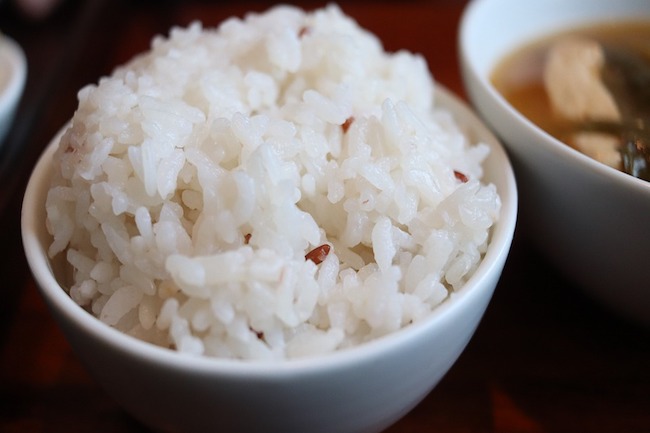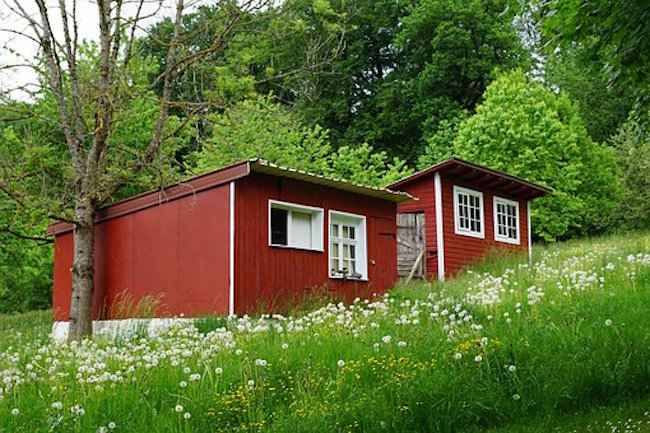What We Learned Living on Our Food Storage for a Month By Kara Stiff for The Organic Prepper
GNN Note – While we have made serious adjustments there is a major struggle with fresh items – fresh produce. As you know this is vital to overall nutrition and good health. Better learn to grow a few things.
******
Before the stay-at-home order was even issued in my state, I stopped going to the grocery store. I despise shopping: the fluorescent lights, the spending of money, the inane conversations about children with strangers. It’s easy to convince myself not to go if people might be sick there. Since I have the luxury of doing so, I can leave what’s available for those who haven’t had the ability to stock up.
This is important. Stocking up when items are scarce is hoarding, but stocking up when there is plenty available is the opposite of hoarding. If I’m stocked up, I have the power to remove the pressure of my own consumption from the system just when the system is most stressed, therefore allowing others to get more of what they need.
I had never actually given our food storage and production systems a good test, though. Now I have, and I’ve learned some important things.
To be clear, my kitchen wasn’t perfectly sealed off from the world. A friend gave us some milk before the stay-at-home order, and my mom brought us some baked goods while I gave her beets and eggs. My husband bought cheese once. But other than that, we’ve been eating at home.
Organization really matters
We’ve been keeping a deep pantry for about seven years, ever since my first child was born and money was very tight. Back then it was just a giant Rubbermaid full of canned tomatoes, beans, pasta, and crackers. We called it the Zombie Apocalypse Box. It was easy to move, which mattered a lot because we moved five times in less than five years, first while pregnant, then with one small child, then with two.
Though it was mobile, the ZAB had serious limitations. First, it probably only constituted two weeks’ worth of supplementation to the regular pantry, which isn’t enough. Even worse, it was difficult to maintain because it was not easy to access and organize. I had to haul the heavy thing out and spread it all over the living room floor once a month to check the expiration dates and rotate stock. This was an impossible task when I had a baby who never slept.
As we finished building our house, the delightful prospect of never moving again sank in. I planned out the cabinet space and stocked what I figured was a month to six weeks of olives, tomatoes, pasta, coconut milk, peanut butter, canned mackerel, and other staples. I also packed some rice and beans for longer-term preservation. (More about a layered food storage plan here).
Not only is this organization much easier to maintain and rotate, but it also allows me to put a greater amount of food in an area not much bigger because the shelves make it easy to stack efficiently. Some things, though, are better off less accessible. This month I was able to keep back a bag of potato chips by hiding them from myself, and I greatly appreciated having them later.
Food storage isn’t enough
A stockpile cannot last forever, no matter how large. Humans are biological, and to survive we must have a place in the ecosystem. Modern industrial agriculture denies this. It tries to bend every flow of living energy into our own mouths, replacing resilient forests with vulnerable cornfields, swapping intricate wild networks for simple one-way streams to build ever more human bodies. Wild mammals now account for less than 4% of the mammal biomass on Earth, while humans, pets, and livestock account for the other 96%.
My family chose a parcel of land that was large enough to accommodate different levels of management. We have a sheet-mulch garden where we tightly control which species are welcome, and a fenced pasture and young orchard that are more of a compromise. Rabbits and raccoons are welcome in the orchard but not Bradford pear trees, and everything is welcome in the pasture except raccoons (geese deter them). These areas constitute only a small slice of our land, while the rest is pretty wild.
This spring, here is what’s available from our land: arugula, beets, and chard overwintered in the garden, French sorrel and a small amount of asparagus from our young patch, wild greens and onions, and eggs from the chickens. From last year’s production, we have goat, chicken, okra, and sweet corn still in the freezer, as well as pumpkins, sweet potatoes, flour corn, pickles, and salsa on the shelf. There isn’t any milk for people yet, because the first goat of the season only kidded yesterday.
Ours is a (mostly) adequate diet
One thing I learned in a month of eating at home is that what I figured to be a month of food really was about a month of food. Nobody is hungry here, and nobody is feeling seriously deprived. I did put myself into calorie deficit, but with my constitution that is easy to do, and happens sometimes even when I’m going to the store regularly.
We’re not suffering from lack of variety, either. All winter I’d been avoiding cooking with our beautiful blue homegrown dry corn because it’s a bit of work to haul out the grinder. Since we’ve been at home I’ve made cornflour, fry bread, Johnny cakes, tortillas, sourdough muffins and something I’m having a hard time naming. It was partly rice and fermented, like South Indian dosas but without the dhal, and it was partly corn like tortillas, and had eggs like crepes. Anyway, it was delicious, the children loved it and I’m going to make it again.
Food is as much work as you make it
All this yummy corn stuff takes a lot of time, though, as does picking wild salads and prepping meals ahead of time. It’s healthier, more interesting and more satisfying to cook this way, but I’m conscious that if this were the type of emergency that required me to also haul water or do other survival tasks, there wouldn’t be time in the day. In fact, there won’t be time tomorrow if my next goat births a whole litter, and she certainly looks like she’s going to.
As we ran out of things, the ones that went first were those that make meals quick and convenient: crackers, pre-made tortillas, cheese. This stuff is hard to store in quantity because it has quick expiration dates, and it’s time-consuming to make. If a pandemic got started in summer rather than winter, there would be a lot of vegetable and fruit mass coming out of the garden that would be quick and easy to slice and plate. But it didn’t, and there isn’t.
March used to be called “hungry month” before global supply chains made it possible to get a fresh strawberry every day of the year. We’re heading into the season where our local orchard runs out of apples, and it’s just not cost-effective to get them from the grocery store in the quantities we eat. What’s more, my local orchard has closed until summer, something I’ve never seen before. I’m not sure if they are protecting their elderly employees from coronavirus, or if their traffic was too low to stay open. Either way, breakfast and lunch will be more work without apples.




